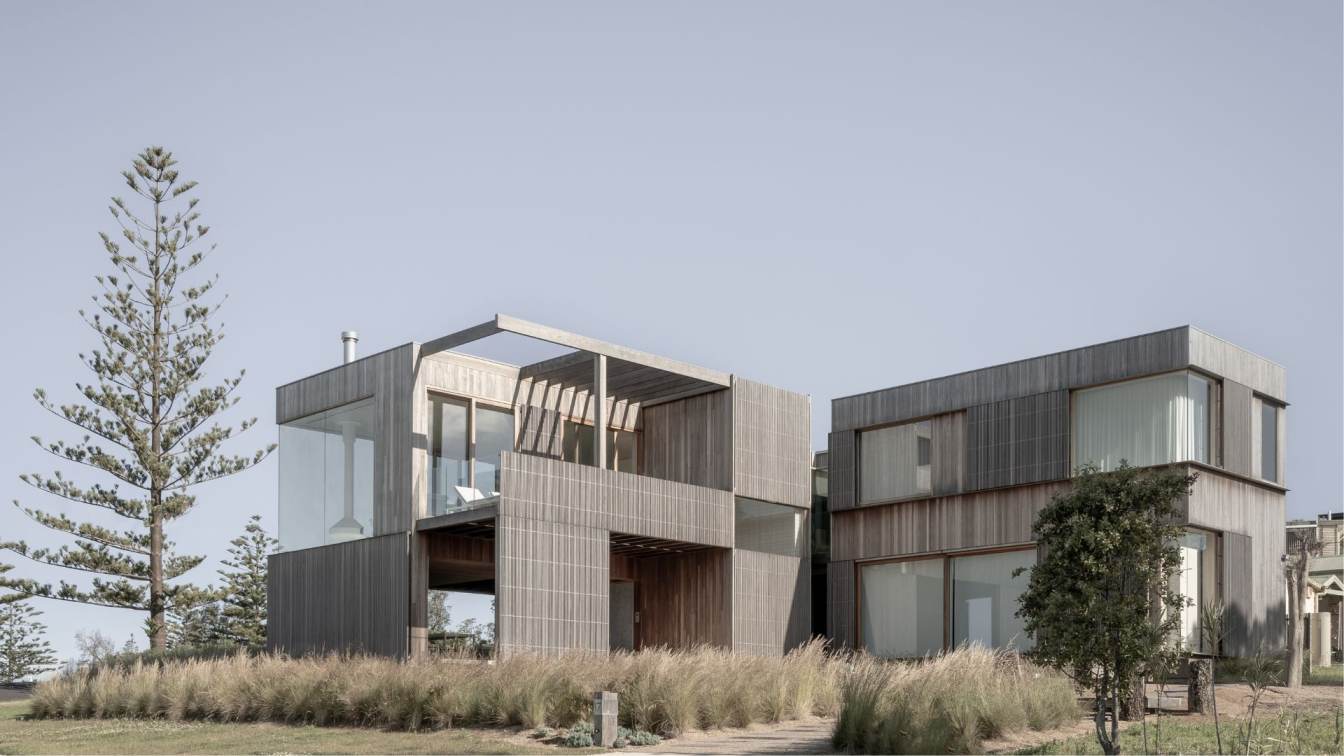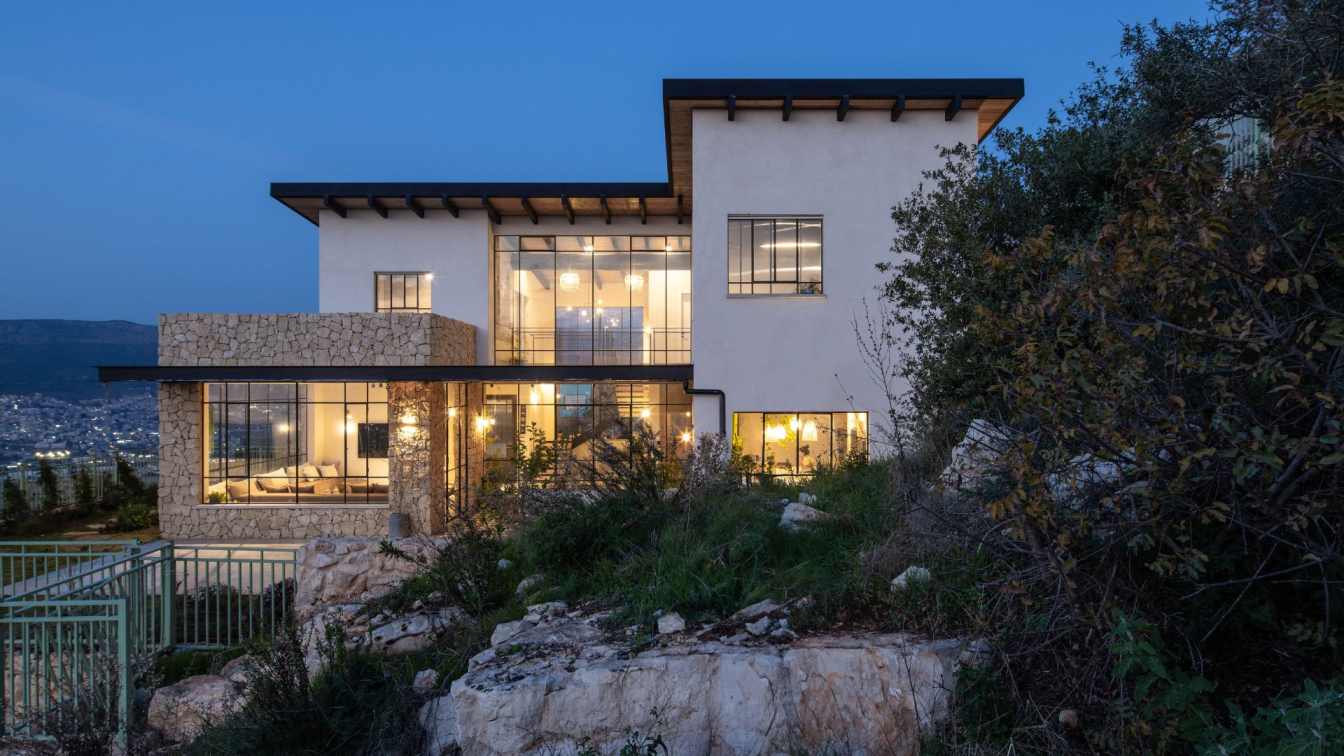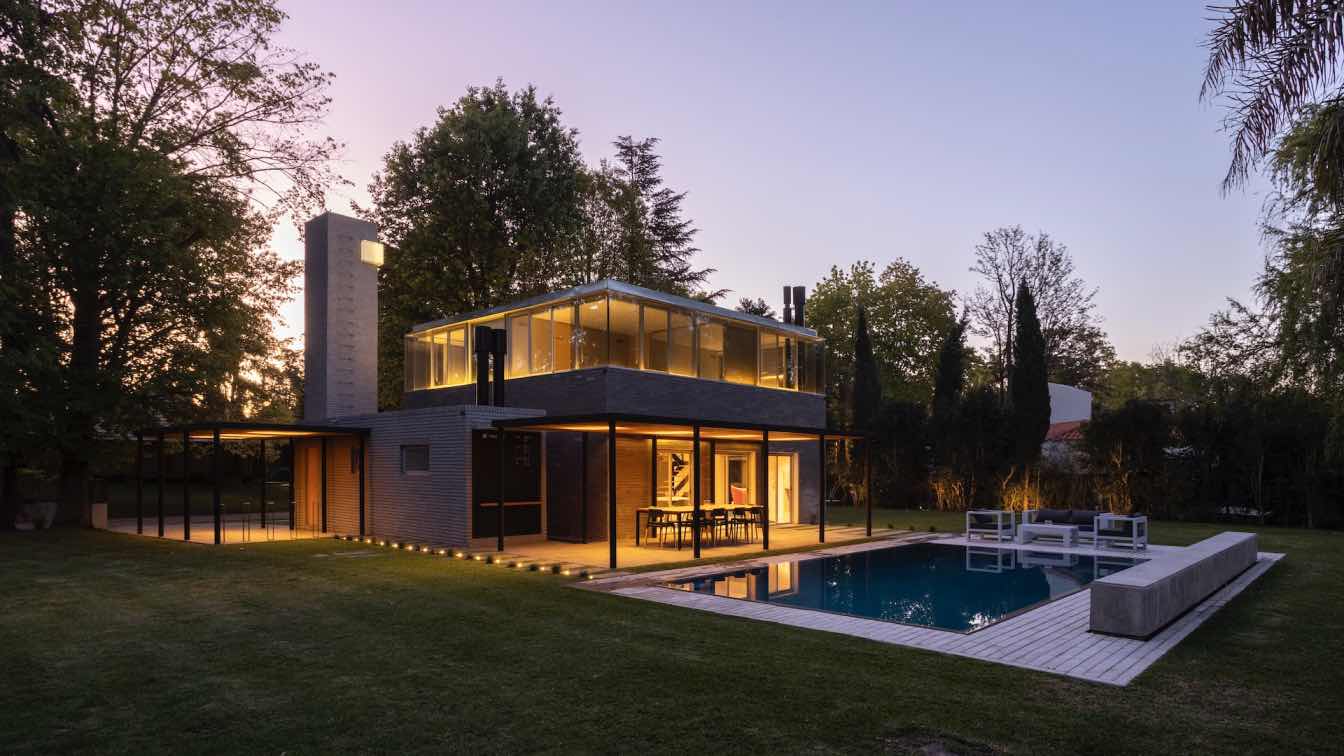Winter Architecture & Kelly Royle Landscape Architecture: Perched on a prominent clifftop bordering Bermagui’s famed Blue Pools, Bermagui Beach House is a sensitive reimagining of a treasured holiday home. Beloved by the family for decades, the existing weatherboard shack was relocated down the road to make way for the next chapter. We designed a new home drawing on the clients’ long-held connection to the place, while refining the informal character of the classic Australian beach house. Our response is directly influenced by the project’s coastal surroundings, with a sensory narrative embedded in both external form and internal detail. Thoughtful spatial planning, strategic orientation and materiality support the family’s traditions and idyllic beachside lifestyle.
The house comprises three solid volumes loosely wrapped in a timber skin. By positioning the home close to its rear boundary, we abolish the traditional model of backyard and front fence; instead establishing an immediate dialogue with the garden, and distant connection to the ocean. This intentional placement combines with layered landscaping to create peripheral outdoor spaces, providing opportunities for sun and shelter among the pavilions. In doing so, the house and garden perform an elegant dance in step with its coastal climate; a dynamic experience for the occupant and passers-by. This relationship to the elements also informs the rhythm of openings along each façade. Though strictly ordered and proportioned, these are enlivened through shallow shifts in depth and sliding timber screens, lending a relaxed air to an otherwise formal facade.
Despite generous concessions made to the street and neighbourhood, the considered placement and program of each pavilion graciously defends the privacy of its inhabitants. The living pavilion sits at the site’s northernmost point, connecting the main pavilion and the guest pavilion by a glazed link, and extending them to the southern boundary. Our objective with the plan is to comfortably accommodate guests and hosts while gathering and being apart. Downstairs, covered dining areas and guest sleeping spaces spill out onto sheltered courtyards. Upstairs, flexible living spaces can open up or bunker down, with separate sleeping areas providing temporary sanctuaries for the home’s main occupants.
Materials selected for Bermagui House tell an evocatively nuanced story. Externally, the deliberate weathering of timber cladding and dune-like landscaping reflect its rugged context. Interiors feature a carefully curated palette of white surfaces, soft sand, timbers and robust brickwork; an elegant minimalist iteration of rockpools, beaches and cliffs nearby. Raw and tactile materiality, contemplative spaces and purposeful transitions ground the home, which can be traversed entirely barefoot. A calming counterpoint to its harsh coastal environs, and a restorative base for family getaways.
























